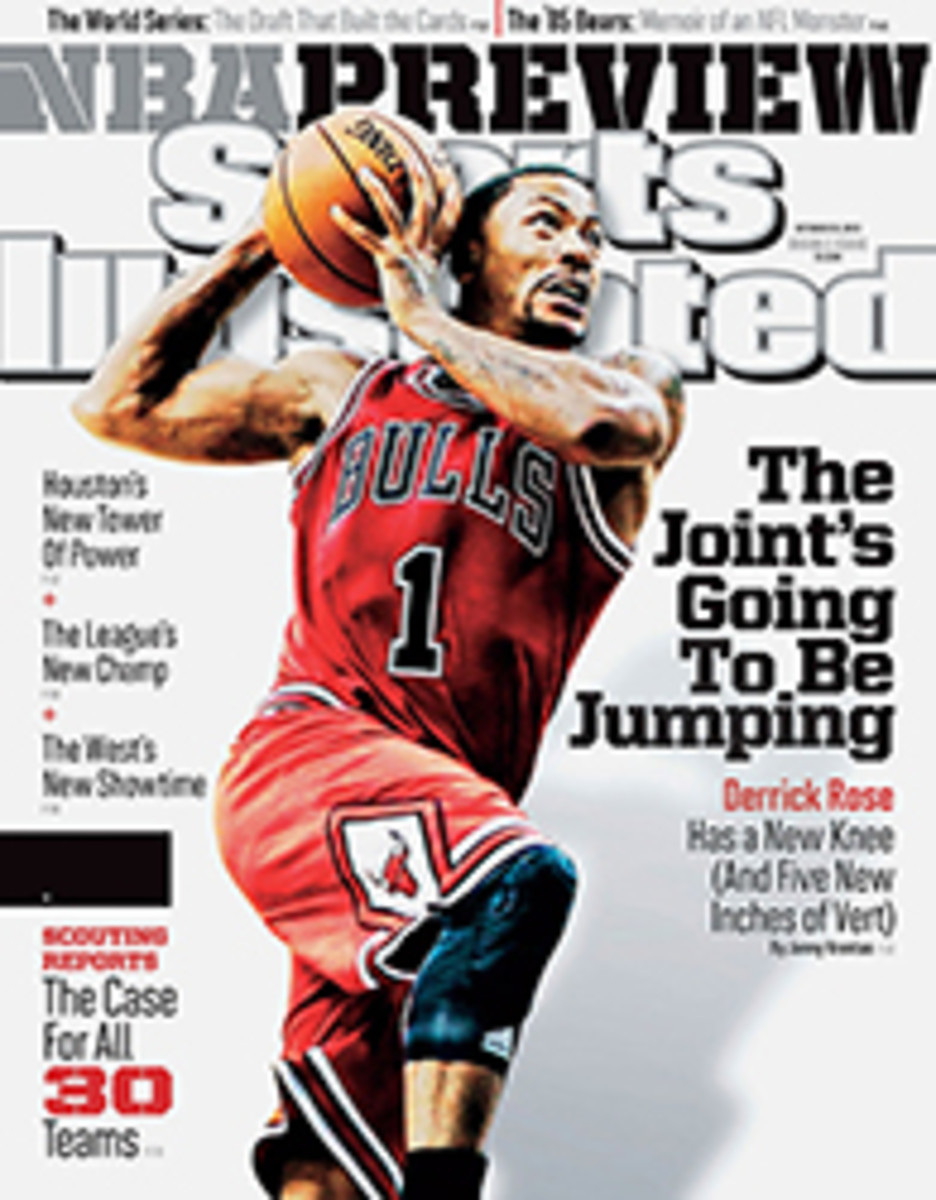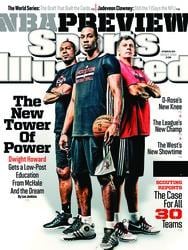
The Prediction
THE RED SOX made it to the World Series by the hair on their chinny-chin-chins, which is to say, given their famed hirsuteness, it wasn't especially close. Likewise, the Cardinals lived up to their 162-game standing as the chalk of the National League. Cinderella stayed home this October, giving us an Original 16 World Series in two baseball-mad cities that defies the game of Jenga that is the modern playoff format. Somehow after 32 postseason games we wound up with a World Series with two division winners who each led its league in wins and in run differential—something that had not happened in the 34 years since the Pirates and the Orioles staged a seven-game battle for supremacy in 1979.
The Red Sox and the Cardinals arrived here by two very different routes. Boston, after a disaster of a season in which it lost 93 games for the first time in 47 years, rebuilt its team last off-season with a new manager and new players. St. Louis is the crockpot to the Sox's microwave. Backed by the best player-development system in baseball, it won the NLCS with 18 homegrown players on the roster. Boston wins with grizzled veterans with beards of such preposterous heft that one of them, first baseman Mike Napoli, uses shampoo and conditioner on his. St. Louis wins with such young pitchers that, if they can muster facial hair at all, they bring to mind a Missourian's front lawn in the midsummer heat: dormant and sparse.
Boston steals bases (fourth in the majors); St. Louis does not (29th). Boston hits home runs (sixth); St. Louis does not (27th). Boston strikes out (eighth); St. Louis does not (26th). St. Louis has young pitchers (second youngest) and Boston has old pitchers (third oldest). St. Louis pitchers throw groundballs (second in groundball-to-flyball rate) and Boston pitchers do not (23rd). The Cardinals play in a pitchers' park (Busch Stadium saw the third fewest total bases) and the Red Sox play in a hitters' park (Fenway Park saw the fifth most).
Above all stylistic differences, however, each team established one dominant ethos. For the Red Sox it is their collective offensive tenacity. In dispatching Detroit in six games in the ALCS, Boston outscored the Tigers 12--1 after the sixth inning and forced Detroit pitchers to throw 146 pitches per game—a hair down from the MLB-best 158 pitches per game they forced in the regular season. Boston players began wearing T-shirts in spring training that read RELENTLESS, and for eight months they have been as good as self-advertised.
The St. Louis ethos is about the power and aggressiveness of its young pitchers. The Cardinals won the clinching game of the NLCS on a two-hit shutout thrown by three rookies throwing 95 to 100 mph: the starter Michael Wacha and relievers Carlos Martinez and Trevor Rosenthal, all of whom were born in the 1990s. Add relievers Kevin Siegrist and Seth Maness, and the Cardinals used five rookie pitchers who combined in the NLCS to allow one earned run in 25 2/3 innings while striking out 26.
On a nine-inning average this postseason, Boston batters have forced 157.1 pitches and St. Louis pitchers have thrown only 130.6. The World Series will be decided within that 27-pitch gap. It comes down to whether the games are played closer to the Boston ethos or the St. Louis ethos—whether the Sox can grind down St. Louis pitchers or whether the Cardinals defuse the Boston tenacity by pounding the strike zone with premium stuff.
Boston was an early-adopter franchise when it came to statistical analysis, and for years it has employed famed empiricist Bill James. But the Red Sox went off the statistical grid to develop their wish list of players as they retooled last winter. "The sabermetricians say you can't quantify makeup," president and CEO Larry Lucchino says, "but we weren't trying to quantify it. Our people have been talking about demeanor and makeup for a long time, but it had extra significance to us this time because of the experiences we endured in recent years. Boston is an intense place to play."
The Red Sox acquired Napoli, outfielders Shane Victorino and Jonny Gomes, shortstop Stephen Drew, catcher David Ross, pitcher Ryan Dempster and closer Koji Uehara. They added pitcher Jake Peavy at the trade deadline. None came with a commitment longer than three years. The new manager, John Farrell, the Red Sox pitching coach from 2007 to '10, provided the Boston know-how and steady hand that the dismissed one, Bobby Valentine, did not.
St. Louis appears even better primed to sustain its success. Starting pitchers Adam Wainwright, Wacha, Joe Kelly, Lance Lynn and Shelby Miller and the four rookie relievers are all under team control through at least 2017; only Wainwright (31) is older than 26.
The series abounds with possibilities. The Cardinals may get back their best clutch hitter, Allen Craig, from a foot injury. The Red Sox will lose either Napoli or David Ortiz from their lineup without the DH in the games in St. Louis, a diminution that helps explain why AL teams are 11--22 in NL parks in World Series games since 2001. The Red Sox have home field advantage; over the past 30 years, AL teams are 14--3 in the World Series when holding the home field advantage. Xander Bogaerts, 21, the rookie shortstop--third baseman who displaced Babe Ruth as the youngest Red Sox player to start a postseason game, has a preternatural calm to his game—he's drawn five walks in 11 postseason plate appearances—reminiscent of Andruw Jones in 1996 or Miguel Cabrera in 2003 or, closer to home, Jacoby Ellsbury in '07.
However, it is that 27-pitch gap between the Boston hitters and the St. Louis pitchers that will be key. The difference in that militarized zone should be slight, which presages a long series. And a long series favors Boston, what with more innings on the young St. Louis arms and the lack of foul territory in tiny Fenway Park encouraging foul balls that prolong at bats. The Sox hit an MLB-best .340 on balls in play at home this year.
The Red Sox have never won a decisive World Series Game 7, having lost all five of them—two to the Cardinals. It is a missing bauble in the collection of a proud franchise with the game's oldest ballpark. The best possible matchup deserves the most drama: Red Sox in seven.
Each team has a dominant ethos. For the Red Sox it is offensive tenacity. For the Cardinals it's the power and aggressiveness of their young pitchers.
PHOTO
AL TIELEMANS/SPORTS ILLUSTRATED (NAPOLI)
MIKE NAPOLI
PHOTO
Photograph by DAVID E. KLUTHO/SPORTS ILLUSTRATED
MICHAEL WACHA

